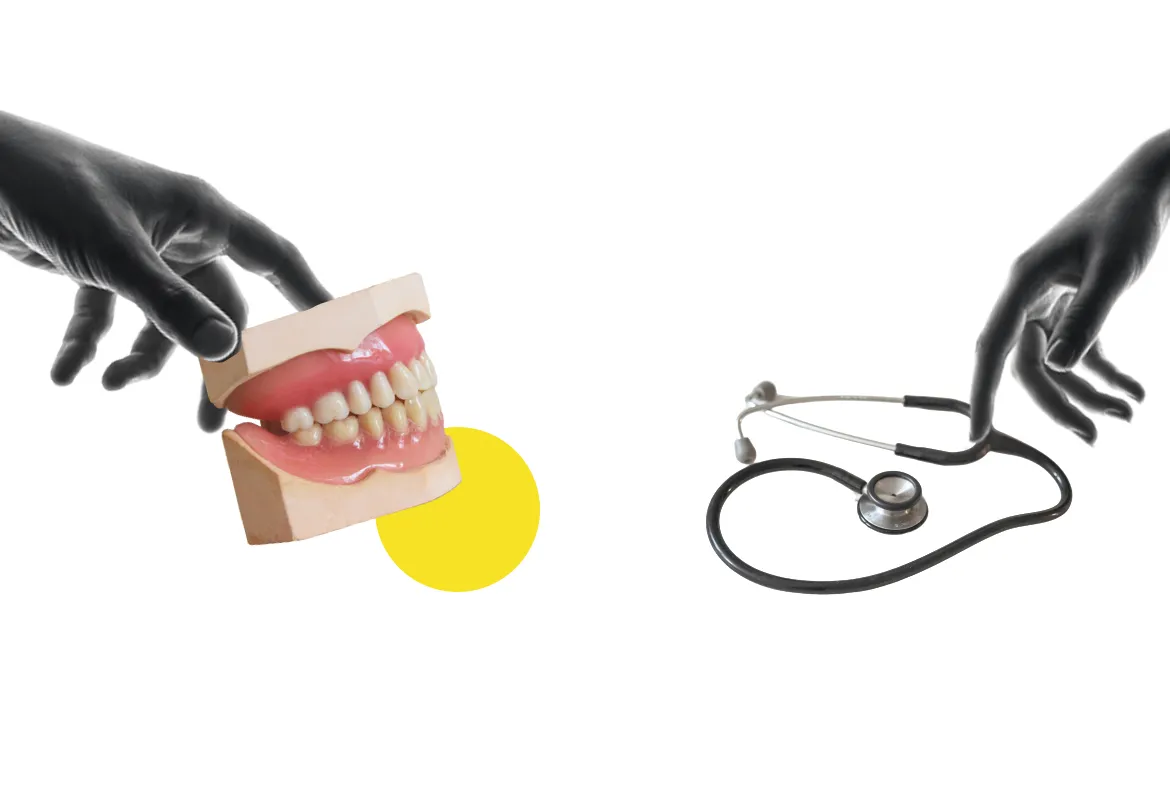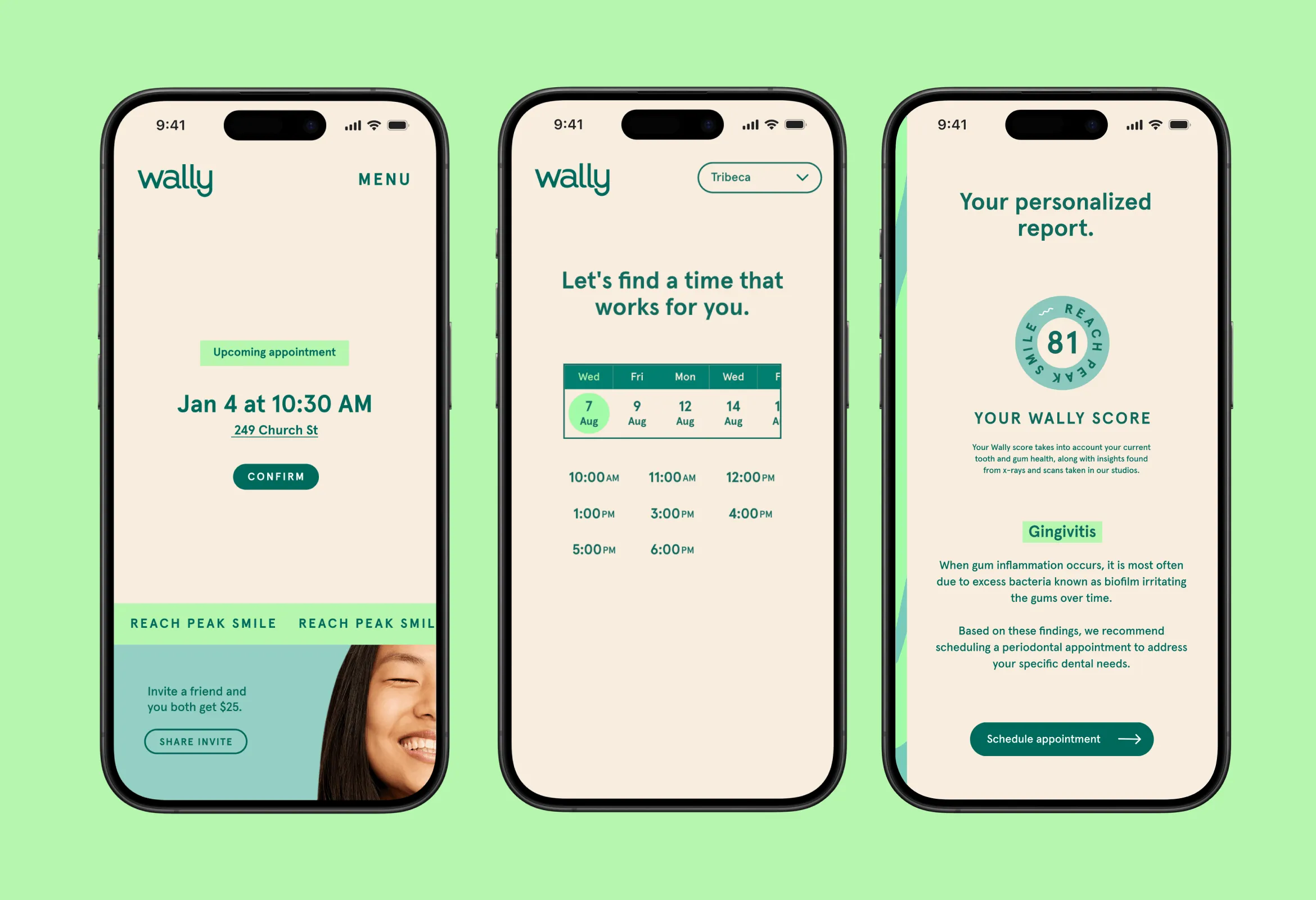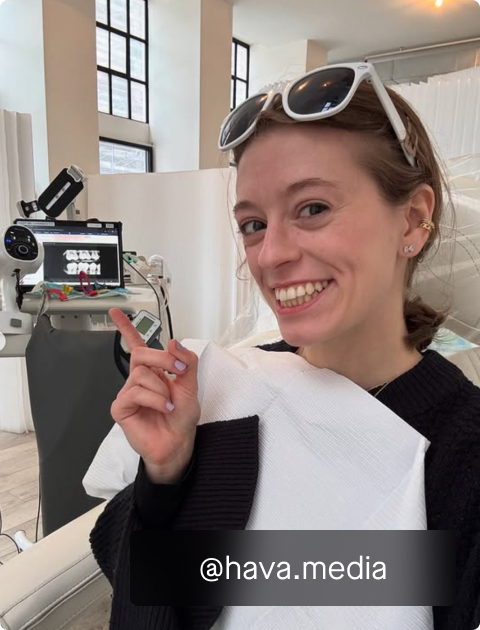My teeth are in my body, so why is dental separate from health?

It doesn't make sense. We don't have different insurance for our hands, our ears, our stomachs, our brains, etc. And if you've got mouth issues, it can profoundly affect your general health.
Take the tragic story of Deamonte Driver, a young boy in Maryland. He had a toothache that went unaddressed, and by the time he went to the hospital the bacteria from the abscess had spread to his brain. After two operations and more than six weeks of hospital care, Deamonte died. A routine tooth extraction (less than $100 at the time) would have saved him.
And poor oral health has serious economic implications. First, having more dental care requirements means paying more money. Second, there are studies that show for every tooth that's missing you lose $720 in earnings.
Given how important dental health is to one's holistic wellbeing, why on earth are health and dental separate? It all began with two dentists in Baltimore who were contemporaries of Edgar Allan Poe.
Two paths diverge in Baltimore and say, "nevermore"
In the 1830s, Baltimore was the hub of dentistry and new explorations in oral health. Dentists were experimenting with things like tooth transplants (yes, taking someone else's teeth and "installing" them into another's gums). Where did these teeth come from? This post lends a hint:
"A lady of wealth and respectability recently died and left notice, stating that no one need trouble themselves about her, as all her teeth had decayed long ere she left this world - and those she had been using she had bequeathed to a friend."
But we digress. What's really important is the meeting of two dentists: Chapin Harris and Horace Hayden
In 1838 Chapin Harris, a practicing dentist, took the lessons he learned practicing dentistry and turned them into the first dental college textbook: The Dental Art. A detail-oriented and scientific thinker, Harris' studies helped jumpstart public understanding of the importance of dental hygiene.
Around the same time the ambitious Baltimore dentist Horace Hayden made his first attempt at creating formal medical education for dentists. He gave lectures on dentistry at a medical college. His students didn't share in his ambition and gave the class poor reviews, saying he lacked evidence in his teachings.
Harris and Hayden bonded over their common desire to take dentistry away from the barbershop realm and into the world of medical experts. They joined forces and their first act was publishing the American Journal of Dental Science in 1839. The next year they launched the American Society of Dental Surgeons.
Dentists lacked an avenue for professional dental training, so Harris and Hayden tried to create dentistry professorships in medical schools. They went to the College of Medicine at the University of Maryland and requested to put dental instruction in the medical course. Legend has it they received a rejection letter that said, "the subject of dentistry is of little consequence." They tried again at New York medical school. Same outcome.
When you can't join them, make your own school. They raised money from colleagues and opened the Baltimore College of Dental Surgery. And thus began the fork in the road between dentists and medical doctors.
How did dental care grow separate from healthcare in America's healthcare system?
Since the 1840s dentists and doctors remained separate in America's larger health care system. Three large trends deepened the divide to result in the separate systems we have today:
- Where they practice. Most dentists work in private practices. These are small businesses (or large if dentists buy other practices) where the dentist acts as business owner and lead dentist. Compare that to medical doctors who most often practice in clinics or are part of large healthcare systems. Medical doctors are primarily focused on delivering care, and are usually not the business owner of their organization.
- How they lobby. Dentists are well organized and have several groups supporting their work (like the American Dental Association). They continue to defend the standards of licensing in dentistry, and to ensure they maintain professional autonomy.
- How they are paid. And finally, a separate financing system grew up around dental care and led to the separation we see today.
Health insurance in the US started in the 1920s and gained momentum after World War II. But dental care was never part of the covered services in these early versions. In 1954, dentists and employers in California, Oregon, and Washington set out to increase access to dental care, and Delta Dental was launched as the first dental insurance program for employees.
By 1960 only 2.3% of Americans had some kind of dental insurance. In 1965, Congress enacted Medicare. Policymakers didn't value dental care as much as other forms of medical care and left it out of Medicare. The next year Delta Dental Plans Association was created and they partnered with the International Association of Machinists to create the first cross-state dental benefits program.
This solidified the norm for dental and health insurance plans to remain separate.
Will dental insurance and medical insurance ever band together? Not under the current system.
Health insurance is a competitive space and companies compete fiercely on price. Adding dental would increase health insurance premiums, which would make them less attractive and decrease sales. No insurance company wants to make the first move to do the right thing at the off chance it hurts their bottom line. That's why health insurance companies launch dental insurance as a separate offering.
Even if a company wanted to combine dental and health, they would need to reconcile the fundamental differences of how dental and health insurance work. That's a herculean task. There are two major differences between dental and health insurance that make them incompatible in their current state:
- Deductibles. Deductibles are the amount the insurance company has patients pay before insurance "kicks in." Dental insurance has low or no deductibles. Health insurance has high deductibles.
- Maximum benefits. This is how much the insurance company will cover once it "kicks in." Dental insurance has low annual maximum benefits. Health insurance is not allowed to have annual or lifetime maximum benefits. That means dental insurance will pay a little bit up front, but when things go wrong they leave you out to dry. Health insurance, instead, makes patients pay the beginning part but then pick up the tab if the bill gets big.
Essentially, it's like trying to mix oil and water. To combine them we need to boil down each to their simplest elements before we could get them to cooperate. We aren't holding our breath for the incumbent insurance companies to make this happen.
Instead, it's going to take innovative companies in the health, dental, and insurance spaces. Companies who aren't afraid to "think wrong" will find creative ways to use data and technology to create better patient experiences for patients. And to take into account the total health picture of each patient. Then the separate paths of dental and health can converge again for the patient - which makes sense since our teeth are still a part of our body.
Source: Otto, 2017









